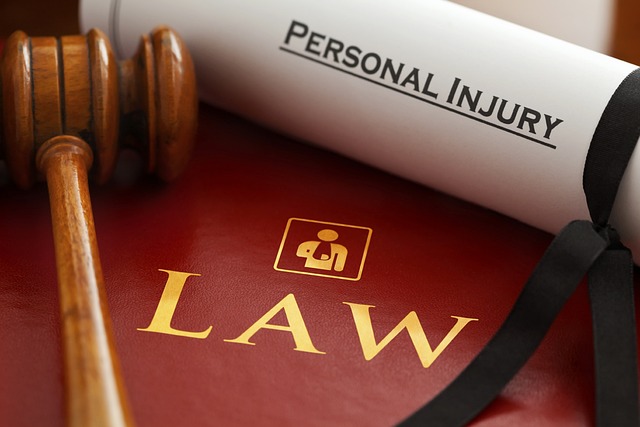Introduction
When people think about compensation in personal injury cases, tangible expenses like medical bills and lost wages often come to mind. However, the law also recognizes the emotional and physical toll an accident can take on your life. This is where pain and suffering damages come into play.
For those injured in Manhattan Beach or Torrance, it’s crucial to understand how pain and suffering compensation is calculated and what steps can strengthen your claim for these non-economic damages.
What Is Pain and Suffering?
Pain and suffering refers to the physical discomfort, emotional distress, and diminished quality of life caused by an injury. Unlike medical bills or property damage, which have clear dollar amounts, these damages are subjective and harder to quantify.
Types of Pain and Suffering:
- Physical Pain: Chronic discomfort, limited mobility, or ongoing medical procedures caused by the injury.
- Emotional Suffering: Anxiety, depression, post-traumatic stress disorder (PTSD), or other mental health challenges stemming from the accident.
- Loss of Enjoyment of Life: Inability to participate in hobbies, activities, or social engagements you once enjoyed.
How Pain and Suffering Is Compensated
California law allows victims to seek compensation for both economic and non-economic damages in personal injury claims. Pain and suffering falls into the latter category, which is intended to address the less tangible impacts of an accident.
Methods of Calculating Pain and Suffering
- Multiplier Method:
- This approach multiplies the victim’s total economic damages (e.g., medical bills, lost wages) by a number between 1.5 and 5.
- The multiplier depends on factors such as the severity of the injury and its long-term effects.
- Per Diem Method:
- A daily rate is assigned to the victim’s suffering, which is then multiplied by the number of days they’ve experienced distress since the accident.
- For example, if the daily rate is $200 and the victim has been in recovery for 150 days, the compensation would total $30,000.
Factors That Influence Pain and Suffering Compensation
Several variables affect how much compensation a victim can receive for pain and suffering:
1. Severity of the Injury
The more serious and life-altering the injury, the higher the potential compensation. For example, spinal cord injuries or traumatic brain injuries often warrant larger payouts than minor cuts or bruises.
2. Impact on Daily Life
Courts consider how the injury affects your ability to work, care for yourself, and enjoy daily activities.
3. Credibility of Evidence
Strong documentation—such as medical records, psychological evaluations, or testimony from loved ones—can bolster your claim.
4. Insurance Policy Limits
Even if your pain and suffering claim is justified, compensation may be limited by the at-fault party’s insurance coverage.
Proving Pain and Suffering
Since pain and suffering is subjective, providing compelling evidence is essential. Here’s how you can strengthen your claim:
1. Medical Records
Detailed medical records serve as the foundation for your claim. They document the extent of your injuries, treatments, and any ongoing pain management efforts.
2. Mental Health Evaluations
Reports from therapists or psychologists can validate claims of emotional distress or PTSD.
3. Personal Journals
Keeping a journal to document your physical pain, emotional struggles, and limitations can provide a powerful, firsthand account of your suffering.
4. Witness Testimonies
Statements from family members, friends, or colleagues who’ve observed changes in your behavior, mood, or abilities can reinforce your claim.
5. Photographs or Videos
Visual evidence of your injuries or the activities you can no longer perform can make your suffering more relatable to juries or insurers.
Overcoming Challenges
While pain and suffering damages are legitimate, they’re often contested by insurance companies and defense attorneys.
Common Defense Arguments:
- “The Victim Is Exaggerating”: Without strong evidence, insurers may argue that your suffering is overstated.
- “Pre-Existing Conditions Are to Blame”: They may claim that your injuries or emotional struggles predate the accident.
- “The Victim Has Recovered”: If you’ve resumed normal activities, they might argue that you’re no longer suffering.
How to Counter These Arguments:
- Provide consistent medical documentation showing ongoing issues.
- Collaborate with an experienced personal injury lawyer to anticipate and refute these tactics.
- Avoid posting on social media, as insurers may use seemingly innocuous posts to downplay your suffering.
Non-Economic Damages in California
In addition to pain and suffering, personal injury victims in California can seek other non-economic damages, including:
- Emotional Distress: Compensation for anxiety, depression, or trauma.
- Loss of Consortium: Damages awarded to a spouse or partner for the loss of companionship or intimacy caused by the injury.
- Reputation Damage: In rare cases, compensation may be sought for harm to a victim’s reputation.
The Role of Attorneys in Pain and Suffering Claims
Personal injury attorneys play a crucial role in ensuring that pain and suffering damages are accurately calculated and fairly compensated.
How Attorneys Help:
- Valuing Your Claim: Attorneys evaluate your injuries, expenses, and emotional toll to determine an appropriate compensation amount.
- Gathering Evidence: From medical records to expert testimony, they compile robust evidence to support your claim.
- Negotiating with Insurers: Attorneys counter lowball offers and push for settlements that reflect the true extent of your suffering.
- Presenting Your Case: If your claim goes to court, an attorney can effectively convey your story to judges and juries.
For those navigating personal injury claims in Manhattan Beach or Torrance, Gammill Law provides experienced representation to help maximize compensation.
Tips for Maximizing Compensation
- Seek Medical and Psychological Care Early: Prompt treatment not only aids recovery but also establishes a clear link between the accident and your suffering.
- Be Honest and Consistent: Exaggerating or minimizing your suffering can harm your credibility.
- Consult an Attorney: Legal guidance ensures your claim is presented effectively and no detail is overlooked.
Final Thoughts
Pain and suffering compensation is a critical part of personal injury claims, addressing the profound ways an accident can disrupt your life. While these damages are harder to quantify than medical bills or property repairs, they are no less significant.
If you’ve been injured in Manhattan Beach or Torrance and believe you’re entitled to pain and suffering damages, Gammill Law offers the expertise needed to pursue your claim successfully. Let their team guide you through the complexities of the process, ensuring that your voice—and your pain—are fully acknowledged.







